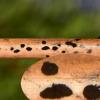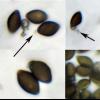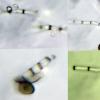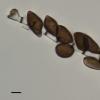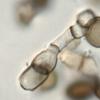
01-03-2018 13:26
 Alvarado Cordobes Manuel
Alvarado Cordobes Manuel
Encontrado en excremento de cerdo iberico de monta

28-02-2018 20:12
 Bernard CLESSE
Bernard CLESSE
Bonsoir à toutes et tous,Que pensez-vous de ce Ty

28-02-2018 19:47
Hello together,does anyone have any idea what that

27-02-2018 20:11
 Alvarado Cordobes Manuel
Alvarado Cordobes Manuel
Hola a todos. Lo encontr,e en excremento de conej

28-02-2018 18:03
 Marc Detollenaere
Marc Detollenaere
Good evening everybody, A few days ago I foun

26-02-2018 09:13
I would like a name on this pyrenomycet, growing o

27-02-2018 20:12
 Alvarado Cordobes Manuel
Alvarado Cordobes Manuel
Hola a todos. Lo encontré en excremento de conej
En Junco
Castillo Joseba,
02-03-2018 11:36
Lo que pongo como Hifas, no tengo claro que lo sean
A ver si hay alguna sugerencia
Saludos
Joseba
Alain GARDIENNET,
02-03-2018 12:04
Re : En Junco
Hi,
Arthrinium sp.
Angel knows it probably, let's wait.
Alain
Arthrinium sp.
Angel knows it probably, let's wait.
Alain
Castillo Joseba,
02-03-2018 13:05
Angel Pintos,
02-03-2018 14:26

Re : En Junco
Hola Joseba y Alain, tiene toda la pinta de A. sporophleum, las medidas de los conidios y la forma limoniforme coinciden, los conidioforos hialinos con un septo transverso marron oscuro.
Saludos
Angel
adjunto imagen de celula madre del conidioforo, conidioforo y conidios de A. sporophleum, recientemente encontrado tambien en JUnco sp
Saludos
Angel
adjunto imagen de celula madre del conidioforo, conidioforo y conidios de A. sporophleum, recientemente encontrado tambien en JUnco sp

